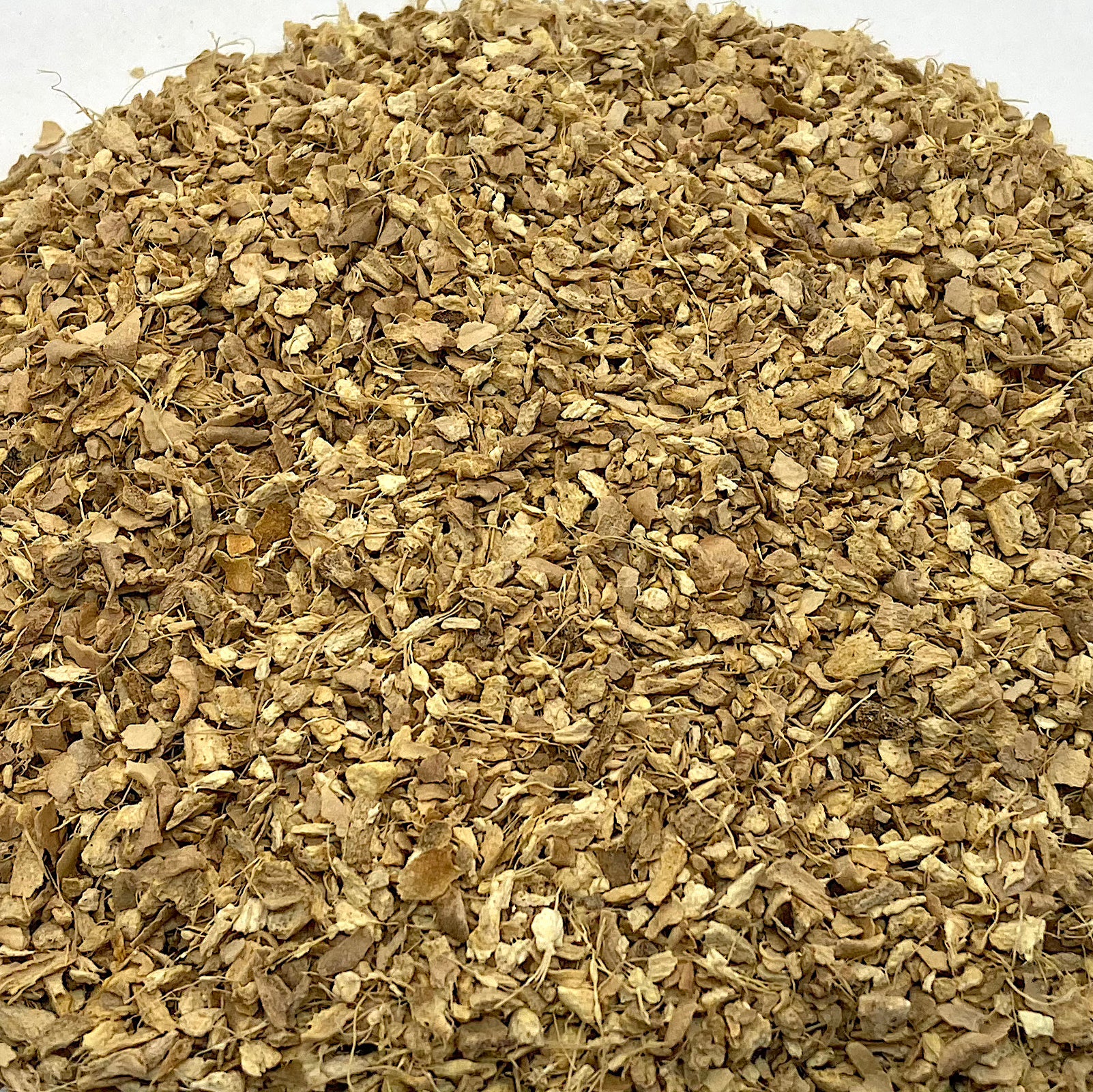Description
USA. Mugwort (Artemesia vulgaris) Cut and Sifted, Certified Organic
Common names: Riverside Wormwood, Felon Herb, Chrysanthemum Weed, Wild Wormwood, Old Uncle Henry, Sailor's Tobacco, Naughty Man, Old Man, St. John's Plant, Carline Thistle, Chiu Ts’Ao, Cingulum Sancti Johannis, Ajenjo, Altamisa, Amarella, Armoise, Beiai, Nagadamani, Moxa
Family: Asteraceae
Common Mugwort, Artemisia vulgaris, is is the most widely known among many related plants that are often called Mugwort. It is a perennial plant growing 3-6+ feet high, native to temperate parts of Europe, Asia, North Africa, and Alaska. It is found in many areas of North America, and occurs in every continent except Antarctica. It thrives as a weed in all kinds of soils and conditions.
The name Mugwort is said to derive from its use in flavoring ales, prior to the widespread use of Hops for that purpose. It is added to foods in Germany, Japan, and Vietnam, and the young stalks are cooked in Chinese stir fry dishes. Mugwort is used for ritual cleansing and offerings, and burned as an incense, in Nepal. The plant has many associations with magical protection. Dried Mugwort leaves are said to enhance lucid dreaming when smoked, brewed as a tea, or in "dream pillows."
Herbalists have valued Mugwort since ancient times, and referred to it as the "mother of herbs" in the Middle Ages. It was prescribed as a nervine for convulsions, palsies, and hysteria; gynecological and urinary tract issues; as a diaphoretic in the early stages of colds; and for malarial fevers. Traditional actions ascribed to Mugwort include anthelmintic, antiseptic, carminative, cholagogue, diaphoretic, digestive, emmenagogue, expectorant, nervine, purgative, stimulant, diuretic, haemostatic, and stomachic. Culpeper describes it as an herb of Venus and highlights its use for female and childbearing issues, and notes many additional virtues of the plant including its value for digestive and liver disorders, bruising, intestinal worms, poisonings, tonsillitis, etc. It is given in Chinese medicine both internally and in the form of moxa, burned on or close to acupuncture points on the skin, and in Indian Ayurvedic and Unani medicine, as well as traditional South American healing.
Mugwort contains essential oils, sesquiterpene lactones, flavonoids, coumarins, and phenolic acids.
Mugwort can cause allergies in some people, and its pollen is considered a major source of hay fever in Northern Europe and North America. It should be used in moderation, cautiously in diabetic individuals, since it can raise blood sugar in some, and avoided during pregnancy.
*These statements have not been evaluated by the FDA. These products are not intended to diagnose, treat, cure or prevent any disease.









